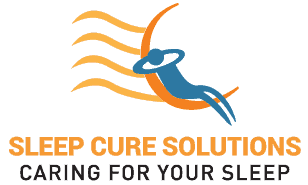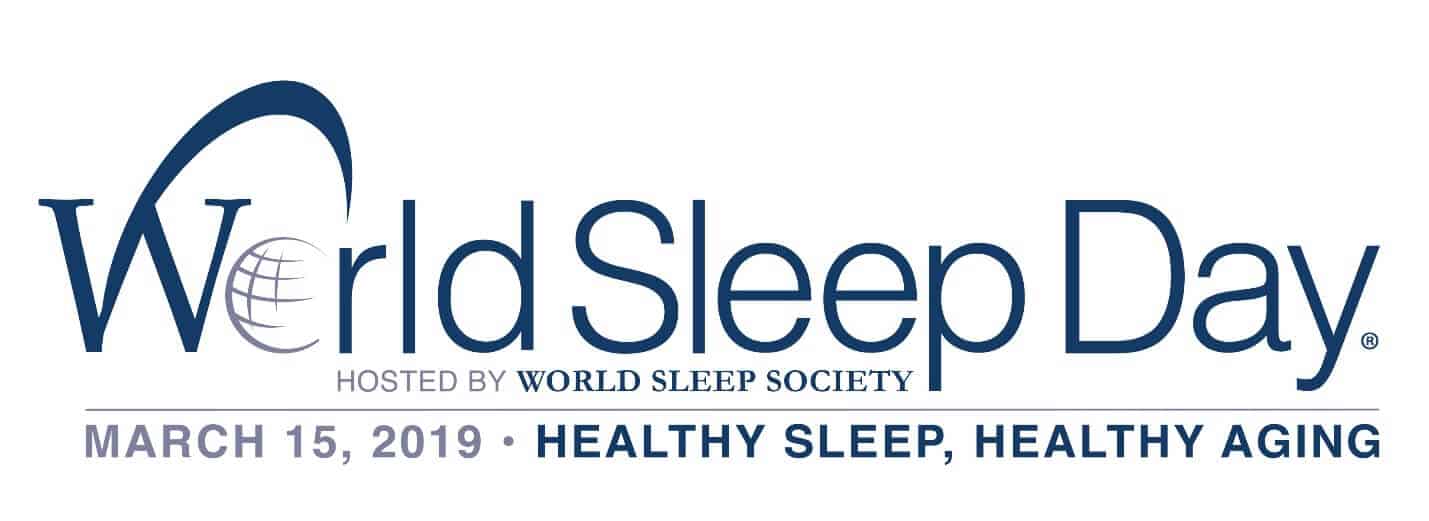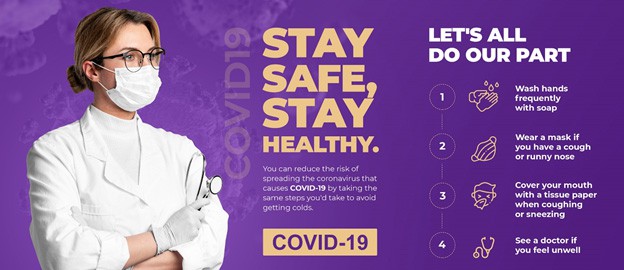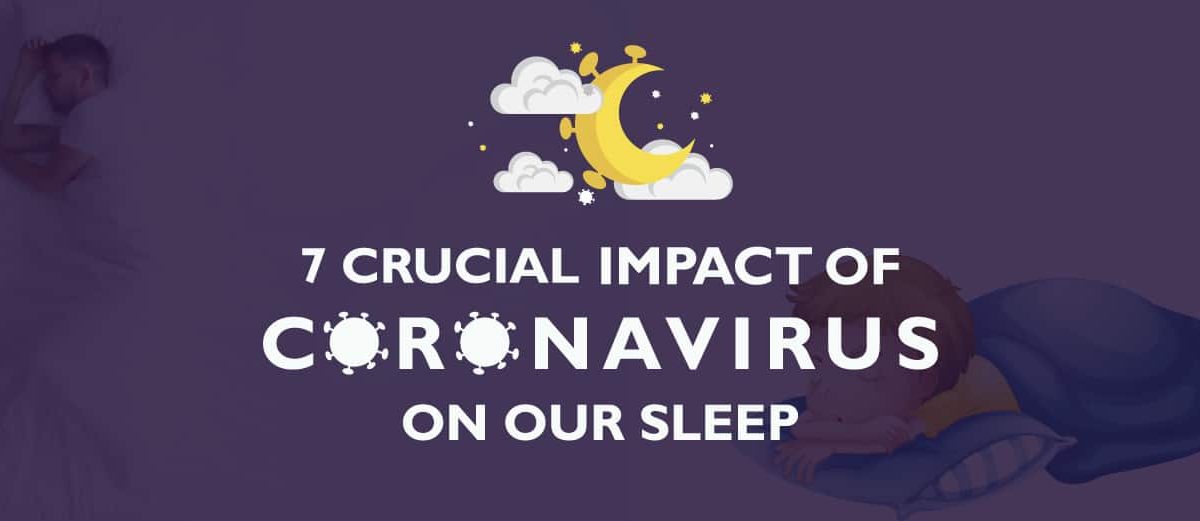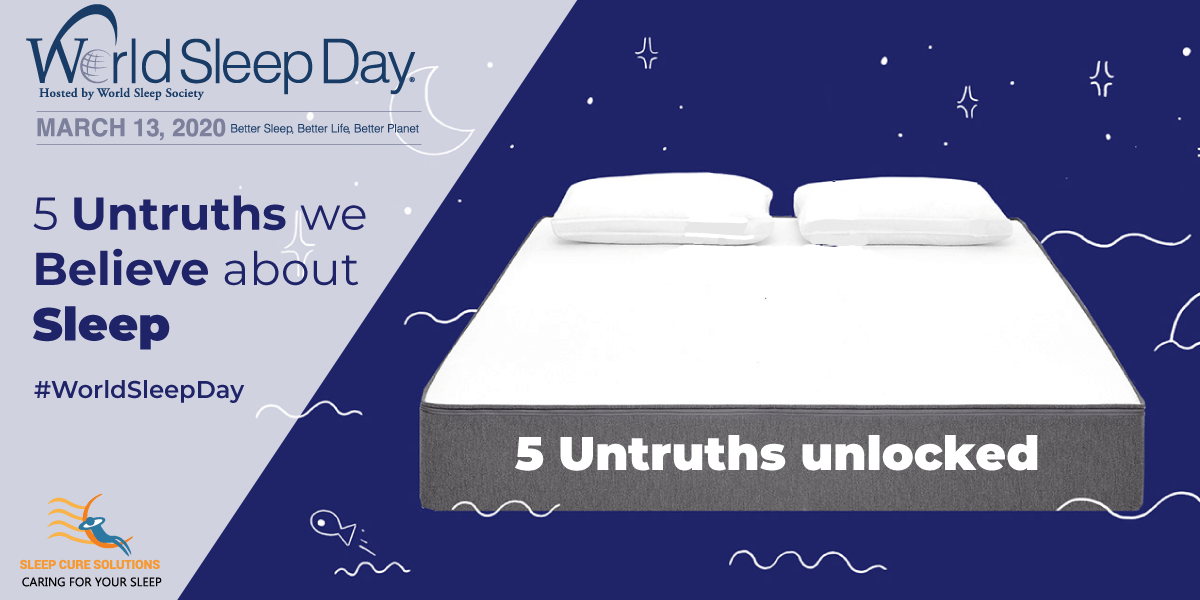World Sleep Day 2019 Toolkit
WORLD SLEEP DAY® (WSD) – WHAT IS IT?
World Sleep Day is an annual, global call to action about the importance of healthy sleep. The focus of WSD is to bring cognizance to the many burdens of sleep problems, as well as the importance of healthy sleep. WSD publicly displays efforts being taken toward prevention and management of sleep disorders. Created and hosted by World Sleep Society, World Sleep Day is an internationally recognized awareness event bringing researchers, health professionals and patients together to recognize sleep and its important impact on our health.
WSD is chaired by committee member Liborio Parrino, MD, PhD Associate Professor of Neurology at Parma University, Italy; with support from World Sleep Society’s staff and a full committee.
WSD events take place globally, but are listed together online at www.worldsleepday.org. In the past, World Sleep Day delegates have worked locally to spread awareness of sleep issues by hosting special events, translating materials, distributing booklets and pamphlets on sleep, hosting school events, press conferences and securing media coverage around the world. Delegates also created content such as public lectures and workshops, appearances on local television and radio shows, booklets, pamphlets, promotional videos, and press releases on sleep. Plan your own World Sleep Day activity today on www.worldsleepday.org/get-involved.
2019 marks the 12th annual World Sleep Day!
Appendix A: Official Press Release
Appendix B: Logos
KEY MESSAGES
The following key messages are designed to give a template to work from and can be adapted to suit the media environment and focus within your countries. The key messages should be used as talking points to guide a consistent message with others around the world. Bolded key messages should be viewed as primary messages when time or space is limited.
2019 Slogan: Healthy Sleep, Healthy Aging
World Sleep Day 2019 will incorporate the slogan, ‘Healthy Sleep, Healthy Aging,’ intended to emphasize the importance of sleep in overall health at any age. This focus is purposefully broad in meaning, surrounding the message that quality of life can be improved with healthy sleep. Conversely, when sleep fails, health declines, decreasing quality of life. Sound sleep is a treasured function and one of the core pillars of health. World Sleep Society has compiled ten tips for healthier sleep. These recommendations for children and adults can be viewed on worldsleepday.org under resources.
2019 Quotes
Dr. Erik St. Louis, Co-Director of the Mayo Center for Sleep Medicine in Rochester, Minnesota, says, “Emphasizing this year’s theme of “Healthy Sleep, Healthy Aging”, for most adults, getting 7 to 8 hours of sleep tonight might be the most important thing you can do to improve your future physical and mental health. Children need even more sleep for optimal learning and play. Recent research has shown the importance of adequate amounts of sleep for brain health, since during sleep, the brain washes away toxins that can potentially damage the aging brain that accumulate during the day while we’re awake. Sleep also keeps the brain’s wiring and connections healthy and working at their best, especially when learning and remembering new things from earlier in the day.”
Timothy I. Morgenthaler, MD is Professor of Medicine and Co-Director of the Mayo Clinic Center for Sleep Medicine. Dr. Morgenthaler has been working as a sleep medicine specialist for over 22 years. When asked about the connection between healthy sleep and healthy aging, Dr. Morgenthaler states, “Getting good quality and quantity of sleep is one key to aging well, improving the odds of physical, cognitive, and emotional health. Getting good sleep in young adulthood and middle age reduces the risk of obesity and hypertension, protects against age-related cognitive decline and Alzheimer’s Disease, and has been associated with decreased rates of depression. In some studies, regular sleep has even been associated with fewer signs of aging in facial skin and better tissue tone. Look better, feel better, be better. There is a lot to be said for giving good quality sleep a high priority in our daily lives.”
Arianna Huffington, founder and CEO of Thrive Global, states, “Sleep is central to every aspect of our mental and physical health. And this is true at every age, from birth onward. The profound importance of sleep in having a healthy, happy and long life never wanes.” For the third year, World Sleep Day is being endorsed by Ms. Huffington and Thrive Global with additional sleep content available at http://thriveglobal.com/authors/world-sleep-society/.
Emerging evidence suggests a connection between premature cell aging and poor sleep. Studies have shown that telomeres are the caps at the end of each strand of DNA protecting chromosomes; short telomere length is associated with premature cellular aging and generally associated with increased cancer risk. Interestingly, individuals with obstructive sleep apnea also have shorter telomere lengths (Huang et al. 2018) suggesting that sleep apnea is another factor causing premature cell aging.
GENERAL FACTS
- Most sleep disorders are preventable or treatable, yet less than one-third of sufferers seek professional help.4
- Sleep problems constitute a global epidemic that threatens health and quality of life for up to 45% of the world’s population.3
- Better understanding of sleep conditions and more research into the area will help reduce the burden of sleep disorders on society.
- Three elements of good quality sleep are:
-
- Duration: The length of sleep should be sufficient for the sleeper to be rested and alert the following day.
- Continuity: Sleep periods should be seamless without fragmentation.
- Depth: Sleep should be deep enough to be restorative.
WORLD SLEEP DAY® (WSD) – HISTORY
The first WSD was held on March 14, 2008, under the slogan “Sleep Well, Live Fully Awake.” The annual awareness day is held the Friday before Spring Vernal Equinox.
- “Sleep Well, Live Fully Awake” – March 14, 2008
- “Drive Alert, Arrive Safe” – March 20, 2009
- “Sleep Well, Stay Healthy” – March 19, 2010
- “Sleep Well, Grow Healthy” – March 18, 2011
- “Breathe Easily, Sleep Well” – March 16, 2012
- “Good Sleep, Healthy Aging” – March 15, 2013
- “Restful Sleep, Easy Breathing, Healthy Body” – March 14, 2014
- “When Sleep is Sound, Health and Happiness Abound” – March 13, 2015
- “Good Sleep is a Reachable Dream” – March 18, 2016
- “Sleep Soundly, Nurture Life” – March 17, 2017
- “Join the Sleep World, Preserve Your Rhythms to Enjoy Life” – March 16, 2018
- “Healthy Sleep, Healthy Aging”– March 15, 2019
- The next WSD will be Friday, March 13, 2020
Media spokespeople
Where possible, we suggest identifying and preparing a message for an internal spokesperson to front your WSD activities. Depending on time and resources, media/message training may also help to prepare your spokesperson for various media activities such as telephone interviews, live television, or radio. World Sleep Society has a list of spokespeople from countries around the world. Please contact World Sleep Society at info@worldsleepsociety.org for the list or to be considered as a spokesperson.
TALKING POINTS
Primary:
- Research shows that we spend up to one-third of our lives sleeping. Sleep is a basic human need, much like eating and drinking, and is crucial to our overall health and well-being.
- Sleep, like exercise and nutrition, is essential for metabolic regulation in children. There is evidence for a link between sleep duration and childhood obesity. The findings are more apparent in girls. Sleep duration is the effect of day-to-day variability of sleep-wake timing on weight regulation. 19,20
- Breathing regularly during sleep is critical to maintain well-being and health. Persistent interruption of the breathing function during sleep is called sleep apnea. This is a pervasive and common disorder that affects 4% of men and 2% of women.22
- Sleep apnea causes daytime sleepiness and fatigue, and may lead to conditions such as hypertension, ischemic heart disease, stroke 27, and diabetes.
- Lack of sleep or poor quality sleep is known to have a significant negative impact on our health in the long and short term. Next day effects of poor quality sleep include a negative impact on our attention span, memory recall and learning.5 Longer term effects are being studied, but poor quality sleep or sleep deprivation has been associated with significant health problems, such as obesity, diabetes, weakened immune systems and even some cancers.6,7,8
- Lack of sleep is related to many psychological conditions such as depression, anxiety and psychosis.9,10
- Quality sleep is crucial to ensure good health and quality of life.
Importance of Sound, Restorative Sleep:
- Good quality and restorative sleep is essential for day-to-day functioning. Studies suggest that sleep quality rather than quantity has a greater impact on quality of life and daytime functioning.12
- Healthy sleep in children will improve the child’s overall wellness and development. WORLD SLEEP SOCIETY has created the 10 commandments of Healthy Sleep for Children.
- Poor quality sleep has a greater negative impact on health, well-being and satisfaction with life than the quantity of sleep a person gets.9,13
- Quality sleep is responsible for alertness, improved functioning the following day and better quality of life.
Consequences of Sleep Disorders
- Sleep disorders cause significant individual and societal burden and form a serious public health problem.
- Obstructive sleep apnea significantly impacts health and well-being. The drop in oxygen that occurs when breathing stops due to OSA puts a strain on the heart and can lead to a number of serious health conditions.
- Directly or indirectly, disrupted sleep can have a negative effect on family life and relationships by affecting a person’s mood and the way in which they are able to perform daily activities and interact socially.13
Extent of the Epidemic
- 35% of people do not feel they get enough sleep, impacting both their physical and mental health.21
- Obstructive sleep apnea (OSA) affects approximately 4% of the adult population. 21 If not properly managed, OSA can have a significant impact on a person’s health and well-being.
- Restless Legs Syndrome is a common disorder and occurs in between 3-10% of the population, although the number of people affected and the severity of the condition differs between countries.
- People who have OSA stop breathing repeatedly during sleep. OSA is caused by a blockage of the upper airway. The collapse of the airway may be due to factors such as a large tongue, extra tissue or decreased muscle tone holding the airway open.
- Each breathing pause can last from 10 seconds to more than a minute and is accompanied by a drop in oxygen associated with each event. The events may occur 5 to 50 times or more each hour. This puts a strain on the heart and can lead to a number of serious health conditions (U.S. Dept. of Health & Human Services, NIH, 2009).
Known Consequences: Some Statistics
- A US study has estimated the annual costs of insomnia to be between $92.5 billion and $107.5 billion.17
- 71,000 people suffer injuries every year due to sleep-related accidents.16
- 1,550 people die because of sleep-related accidents.16
- 46% of individuals with frequent sleep disturbances report missing work or events, or making errors at work, compared to 15% of healthy sleepers.18
Specific Sleep Disorders:
Insomnia
- Insomnia affects between 30-45% of the adult population.3
- Primary insomnia (insomnia with no underlying condition) affects 1-10% of the general population, increasing up to 25% in the elderly.3
- Lack of sleep or poor quality sleep also leaves us more vulnerable to accidents. People who suffer insomnia are seven times more likely to become involved in an accident causing death or serious injury than good sleepers.11
- Studies have shown that people with insomnia suffer from more symptoms of anxiety and depression than people without insomnia.9
- Insomnia has a negative impact in all areas of a sufferer’s life.
- Insomnia can affect work performance, with a change in character and a drop in the quality of work. If the disorder remains untreated, this may even lead to reduced job prospects and loss of employment.13
Sleep Breathing Problems
Obstructive sleep apnea is very prevalent, yet under recognized. The Wisconsin Sleep Cohort Study estimated a prevalence of 17% among men and 9% among women in that state in the United States. In northern India, the prevalence of obstructive sleep apnea and obstructive sleep apnea syndrome is 13.7%. OSA is an independent risk factor for hypertension and other cardiovascular ailments. In children, sleep apnea may be the underlying cause of neuropsychological disturbances. Pediatric sleep apnea is typically associated with adenotonsillar hypertrophy.
Untreated sleep apnea may lead to heart diseases, stroke, and vascular dementia. Both adults and children should be formally investigated in sleep centres if sleep apnea is suspected, because both adult and pediatric sleep apnea is treatable and correctable; a correct and precise diagnosis is always required. 26
Sleep apnea is diagnosed with polysomnography in the sleep laboratory. Treatment with non-invasive positive airway (continuous positive airway pressure, or CPAP) ventilation is generally successful. For mild forms of sleep apnea, the application of oral devices can be beneficial. Surgery to remove excessive tissues in the oropharynx may be considered for individuals who cannot tolerate non-invasive equipment or who have obvious obstruction to airflow in the oropharynx by redundant tissue growth or large tonsils. There is proof that successful correction of sleep apnea with non-invasive positive airway pressure ventilation lowers mean blood pressure and may reduce the risk of myocardial infarction and stroke. Excessive daytime somnolence generally improves with successful treatment of sleep apnea.
HOW YOU CAN TAKE ACTION
- Join World Sleep Day 2018 as a delegate or a supporter.
- Obtain more information at www.worldsleepday.org.
- Be cognizant that most sleep problems can be managed by changing behaviors around sleep, medical therapy, or cognitive behavioral therapy.
- Be aware that patients suffering from sleep complaints, or who suffer from excessive daytime sleepiness, should see a physician and, if needed, obtain a consultation in a sleep center.
AVAILABLE VIDEOS
Informational and historical videos document significant discoveries in the field of sleep medicine. View video content including (but not limited to):
- Prof. Michel Billiard of Montpellier, France, gives a historical perspective of the evolution of narcolepsy as a clinical entity (English)
- Dr. Ernest Hartmann describes 50 years of dedication to the exploration of sleep and dreams
- Dr. Karl Ekbom Jr. narrates how his father Professor Karl-Axel Ekbom developed the modern concept of restless legs syndrome.
- Dr. Christian Guilleminault is interviewed providing details on early discovery of obstructive sleep apnea.
PRINCIPLES OF GOOD SLEEP
Following the guidelines of Sleep Hygiene can help to prevent poor quality nocturnal sleep, short duration of sleep, fragmentation of sleep and serious sleep deprivation in adults.
10 COMMANDMENTS OF SLEEP HYGIENE FOR ADULTS
- Fix a bedtime and an awakening time.
- If you are in the habit of taking siestas, do not exceed 45 minutes of daytime sleep.
- Avoid excessive alcohol ingestion 4 hours before bedtime and do not smoke.
- Avoid caffeine 6 hours before bedtime. This includes coffee, tea and many sodas, as well as chocolate.
- Avoid heavy, spicy, or sugary foods 4 hours before bedtime. A light snack before bed is acceptable.
- Exercise regularly, but not right before bed.
- Use comfortable bedding.
- Find a comfortable temperature setting for sleeping and keep the room well ventilated.
- Block out all distracting noise and eliminate as much light as possible.
- Reserve the bed for sleep and sex. Don’t use the bed as an office, workroom or recreation room.
10 COMMANDMENTS OF SLEEP HYGIENCE FOR CHILDREN [AGES BIRTH TO 12 YEARS]
- Go to bed at the same time every night, preferably before 9:00PM.
- Have an age-appropriate nap schedule.
- 3. Establish a consistent bedtime routine.
- Make your child’s bedroom sleep conducive – cool, dark, and quiet.
- Encourage your child to fall asleep independently.
- Avoid bright light at bedtime and during the night, and increase light exposure in the morning.
- Avoid heavy meals and vigorous exercise close to bedtime.
- Keep all electronics, including televisions, computers, and cell phones, out of the bedroom and limit the use of electronics before bedtime.
- Avoid caffeine, including many sodas, coffee, and teas (as well as iced tea).
- Keep a regular daily schedule, including consistent mealtimes.
ABOUT WORLD SLEEP SOCIETY
World Sleep Day is organized by World Sleep Society, founded by World Association of Sleep Medicine (WASM) and World Sleep Federation (WSF), an international association whose mission is to advance sleep health worldwide. World Sleep Society is working toward increasing worldwide awareness of the importance of sleep and the adverse consequences resulting from lack of sleep, due either to enforced lifestyle or to sleep disorders themselves. The society acts as a link between various sleep associations and cultures, sleep clinicians and researchers, in the advancement of worldwide sleep health. To learn more, visit www.worldsleepsociety.org. Stay connected: @_WorldSleep (Twitter), facebook.com/worldsleepsociety.
BIBLIOGRAPHY
- Department for Transport, Sleep related vehicle accidents. http://www.dft.gov.uk/pgr/roadsafety/research/rsrr/theme3/sleeprelatedvehicleaccidentsno22?page=2 . Last accessed 18/12/08
- Ohayon MM, Zulley J. Correlates of global sleep dissatisfaction in the German population. Sleep 2001; 24: 780-787
- Wade AG, Zisapel N, Lemoine P. Prolonged-release melatonin for the treatment of insomnia: targeting quality of sleep and morning alertness. Ageing Health 2008; 4 (1): 11-12
- Léger D et al. Economic consequences of insomnia. Sleep Res 26, 412
- Ohayon MM et al. Correlates of global sleep satisfaction in the psychiatric diagnosis categories. Psychiatry Clin Neurosci 2002; 56: 239-240
- Taheri S, Lin L, Austin D et al. Short sleep duration is associated with elevated ghrelin, reduced leptin and increased body mass index. PLoS Med 2004; 1(3): e62
- Gottlieb DJ, Punjabi NM, Newman AB et al. Association of sleep time with diabetes mellitus and impaired glucose tolerance. Arch Intern Med 2005; 165(8): 863-7
- Gumustekin K, Seven B, Karabulut N et al. Effects of sleep deprivation, nicotine and selenium on wound healing in rats. Neurosci 2004; 114: 1433-1442
- Zammit GK, Weiner J, Damato N et al. Quality of life in people with insomnia. Sleep 1999; 22 Suppl 2: S379-85
- Beusterien KM, Rogers AE, Walslenben J et al. Health related quality of life effects of modafinil for treatment of narcolepsy. Sleep 1999; 22(6): 757-765
- Metlaine A et al. Socioeconomic impact of insomnia in working populations. Indust Health 2005; 43(1): 11-19
- Kandel ER, Schwartz JH, Jessell TM. Principles of neural science. The McGraw-Hill Companies Inc, 2000
- Pilcher JJ. Sleep quality versus sleep quantity: relationships between sleep and measures of health, well-being and sleepiness in college students. J Psychosom Res. 1997; 42(6): 583-96
- Royal Society for the Prevention of Accidents, RoSPA. Driver Fatigue and Road Accident: A literature review and position paper. February 2001
- Think! Tiredness can kill- advice for drivers. INF159 Driver and Vehicle Licensing Agency (DVLA)
- National Highway Traffic Safety Administration (NHTSA) www.nhtsa.dot.gov
- Reeder CE, Franklin M, Bramley TJ. Current landscape of insomnia in managed care. Am J Manage Care 2007; 13(Suppl 5): S112-6
- National Sleep Foundation www.sleepfoundation.org
- Yu Y, Lu BS, Wang B, Wang H, Yang J, Li Z, Wang L, Liu X, Tang G, Xing H, Xu X, Zee PC, Wang X. Short sleep duration and adiposity in Chinese adolescents. 2007 Dec 1;30(12):1688-97
- Gozal D. et al, 2011 Pediatrics. In press
- The ‘Philips Index for Health and Well-being: A global perspective’ – www.philips-thecenter.org/the-philips-global-index. Last accessed on 28 February 2011
- Young T, Palta M, Dempsey J, Skatrud J, Weber S, Badr S. The occurrence of sleep-disordered breathing among middle-aged adults. N Engl J Med 1993;328:1230-5.
- Sharma SK, Kumpawat S, Banga A, Goel A. Prevalence and risk factors of obstructive sleep apnea syndrome in a population of Delhi, India. Chest 2006;130:149-56.
- Nieto FJ, Young TB, Lind BK, et al. Association of sleep-disordered breathing, sleep apnea, and hypertension in a large community-based study: Sleep Heart Health Study. JAMA 2000;283:1829-36.
- Beebe DW. Neurobehavioral morbidity associated with disordered breathing during sleep in children: A comprehensive review. Sleep. 2006;29(9):1115-1134.
- Culebras A. Sleep Disorders. In: Kris Heggenhougen and Stella Quah, editors International Encyclopedia of Public Health, Vol 6. San Diego: Academic Press; 2008. pp. 21-26.
- Culebras A, editor. Sleep, stroke and cardiovascular disease. Cambridge University Press, 2013.
- Breslau N, Roth T, Rosenthal L, Andreski P. Sleep disturbance and psychiatric disorders: a longitudinal epidemiological study of young adults. Biol Psychiatry 1996;39(6):411–8.
- Gillin JC. Are sleep disturbances risk factors for anxiety, depressive and addictive disorders? Acta Psychiatr Scand Suppl 1998;393:39–43.
- Jaussent I, Bouyer J, Ancelin ML, et al. Insomnia and daytime sleepiness are risk factors for depressive symptoms in the elderly. Sleep 2011;34(8):1103–10.
- Babson KA, Feldner MT, Trainor CD, Smith RC. An experimental investigation of the effects of acute sleep deprivation on panic-relevant biological challenge responding. Behav Ther 2009;40(3):239–50.
- Belleville G, Cousineau H, Levrier K, St-Pierre-Delorme ME. Meta-analytic review of the impact of cognitive-behavior therapy for insomnia on concomitant anxiety. Clin Psychol Rev 2011;31(4):638–52.
- Belleville G, Cousineau H, Levrier K, St-Pierre-Delorme ME, Marchand A. The impact of cognitive-behavior therapy for anxiety disorders on concomitant sleep disturbances: a meta-analysis. J Anxiety Disord 2010;24(4):379–86.
- Gosling, John A., Philip J. Batterham, Nick Glozier, and Helen Christensen. “The Influence of Job Stress, Social Support and Health Status on Intermittent and Chronic Sleep Disturbance: An 8-year Longitudinal Analysis.” Sleep Medicine 15 (2014): 979-85. Web. 8 Oct. 2014. <http://www.wasmonline.org/>
APPENDIX A – PRESS RELEASE [BEGINS ON NEXT PAGE]
FOR IMMEDIATE RELEASE
World Sleep Society
+1.507.316.0084
info@worldsleepsociety.org
http://worldsleepday.org/
CELEBRATE WORLD SLEEP DAY® ON MARCH 15
TO ADVANCE SLEEP HEALTH WORLDWIDE
ROCHESTER, MN – January 3, 2019—World Sleep Society is issuing a global call to action about the importance of healthy sleep. Friday, March 15, 2019 is the 12th annual World Sleep Day®. Created and hosted by World Sleep Society, World Sleep Day is an internationally recognized awareness event bringing researchers, health professionals and patients together to recognize sleep and its important impact on our health.
World Sleep Day 2019 will incorporate the slogan, ‘Healthy Sleep, Healthy Aging,’ intended to emphasize the importance of sleep in overall health at any age. This focus is purposefully broad in meaning, surrounding the message that quality of life can be improved with healthy sleep. Conversely, when sleep fails, health declines, decreasing quality of life. Sound sleep is a treasured function and one of the core pillars of health. World Sleep Society has compiled ten tips for healthier sleep. These recommendations for children and adults can be viewed on worldsleepday.org under resources.
From the Mayo Clinic Center for Sleep Medicine
Dr. Erik St. Louis, Co-Director of the Mayo Center for Sleep Medicine in Rochester, Minnesota, emphasizes this year’s theme of Healthy Sleep, Healthy Aging by explaining, “For most adults, getting 7 to 8 hours of sleep tonight might be the most important thing you can do to improve your future physical and mental health. Children need even more sleep for optimal learning and play. Recent research shows the importance of adequate amounts of sleep for brain health, since during sleep, the brain washes away toxins that can potentially damage the aging brain that accumulate during the day while we’re awake. Sleep also keeps the brain’s wiring and connections healthy and working at their best, especially when learning and remembering new things from earlier in the day.”
Timothy I. Morgenthaler, MD is Professor of Medicine and Co-Director of the Mayo Clinic Center for Sleep Medicine working as a sleep medicine specialist for over 22 years. “Getting good quality and quantity of sleep is one key to aging well, improving the odds of physical, cognitive and emotional health.Getting good sleep in young adulthood and middle age reduces the risk of obesity and hypertension, protects against age-related cognitive decline and Alzheimer’s Disease, and has been associated with decreased rates of depression. In some studies, regular sleep has even been associated with fewer signs of aging in facial skin and better tissue tone. Look better, feel better, be better. There is a lot to be said for giving good quality sleep a high priority in our daily lives.”
Dr. Erik St. Louis finishes by adding, “We’re excited to support the World Sleep Society’s World Sleep Day initiative to call more attention to the importance of regularly getting adequate amounts of restful sleep. As sleep medicine physicians, we dedicate our careers toward diagnosing and treating sleep disorders such as sleep apnea, insomnia, restless legs syndrome, and other common problems with sleep quality, but this starts with getting the right amount of sleep every night.”
CALL TO ACTION
To participate in World Sleep Day, consider:
- Organizing an event to create excitement and generate interest in World Sleep Day.
- Circulating the official press release with sleep experts and local media.
- Distributing sleep patient literature such as booklets, leaflets and newsletters.
- Finding other ideas at worldsleepday.org.
- Spreading the word on social media about #WorldSleepDay.
More information can be viewed on worldsleepday.org/get-involved/plan.
GLOBAL PARTNERSHIPS
The 12th Annual World Sleep Day has partnered with Arianna Huffington’s Thrive Global, Ferring Pharmaceuticals, China Sleep Products Association, AmLife and Dormeo. More sponsors will be included before March.
Arianna Huffington, founder and CEO of Thrive Global says, “Sleep is central to every aspect of our mental and physical health. And this is true at every age, from birth onward. The profound importance of sleep in having a healthy, happy and long life never wanes.”
Ferring Pharmaceuticals recognizes the importance of healthy sleep in healthy aging by raising awareness of nocturia, the need to wake to urinate more than once in the night. People often ignore sleep disturbance from nocturia, but interrupted sleep on a regular basis is suggested to have a detrimental negative impact on an individual’s overall physical health and emotional well-being, in the long and short term. To mark World Sleep Day, Ferring is committed to increase the public’s understanding around getting adequate sleep.
Mr. Lew Mun Yee, the founder of AmLife states, “AmLife is fully devoted in the noble mission of World Sleep Society in advocating better quality sleep in mankind. AmLife proudly joins the
call for Healthy Sleep, Healthy Aging–this year’s World Sleep Day theme. Aging or growing older does not mean compromising one’s health. AmLife’s new tagline, “Life. Redefined.” dovetails the 2019 theme. With better quality of sleep, life certainly can be redefined. Life can be much fuller in your golden years.”
CONTACTS
Allan O’Bryan, World Sleep Society Executive Director: obryan@worldsleepsociety.org
Dr. Liborio Parrino, 2019 World Sleep Day Committee Chair: liborio.parrino@unipr.it
###
About World Sleep Society
World Sleep Day is organized by World Sleep Society, an international association whose mission is to advance sleep health worldwide. World Sleep Society hosts a biennial scientific congress on sleep medicine aiming to globally connect sleep professionals and researchers to advance current knowledge on sleep. A job board has also been created for sleep medicine professionals on www.worldsleepsociety.org. Follow the excitement on Twitter @_WorldSleep and facebook.com/WASMF.
About Ferring Pharmaceuticals
Headquartered in Switzerland, Ferring Pharmaceuticals is a research-driven, specialty biopharmaceutical group active in global markets. Nocturia, the need to wake to urinate more than once in the night, is a common cause of sleep disruption in adults of all ages. Ferring Pharmaceuticals is committed to raise awareness of nocturia. To learn more about nocturia or Ferring, please visit www.ferring.com/.
About AmLife International
AmLife established its sleep healthcare business to help consumers achieve optimal health in their daily sleep as well as enjoy the wonderful health-lifting, sickness-preventing and recuperative effects of its products. AmLife has pioneered the combination of bedding equipment and Japan’s state-of-the-art technology to expand the unlimited potential of the sleep healthcare market, providing a brand-new health solution for modern-day people, which they can use every day.
APPENDIX B – Logos
Written consent from the World Sleep Society must be given before World Sleep Day logos may be used by companies or organizations. Individuals may use logos after becoming a delegate.
The use of the words “World Sleep Day” is copyrighted with the United States Patent and Trademark Office serial number 85274932. Written permission is required to use the words “World Sleep Day” and/or logos of World Sleep Day and/or World Sleep Society.
